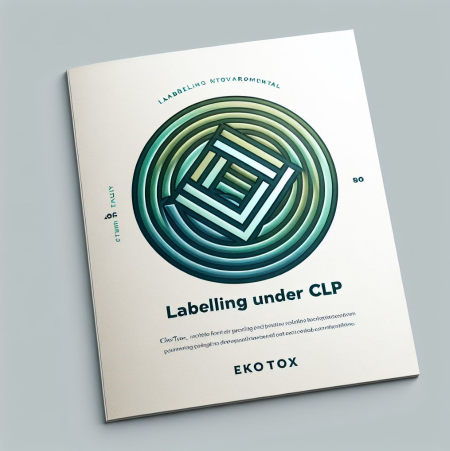
The updated EU Classification, Labelling and Packaging of hazardous chemicals Regulation (2024/2865 EU Regulation– CLP Regulation) was published in the Official Journal of the EU on 20 November 2024 and enters into force on 10 December 2024.
New provisions and clarifications include:
- practical labelling changes, in particular mandatory formatting rules for labels to ensure legibility (including minimum font sizes and spacing), greater flexibility to use fold-out labels/leaflets (with mandatory content and arrangement of label elements), additions to what must be included when using ‘limited’ labelling, and voluntary digital labelling;
- mandatory EU-based supplier, along with contact information;
- new requirements for adverts to include fundamental hazard information (including pictograms and signal words) and for distance sales including via online marketplaces to carry full CLP label elements;
- introduction of specific rules (and in some cases prohibitions) for refills and refill stations; and
- new hazard classes, new rules around endocrine disruptors, classification change label updates, and changes to harmonised classifications and the way they are notified.
The updated CLP Regulation will have significant implications for a wide range of businesses, including manufacturers, downstream users, retailers and distributors, and especially for non-EU based sellers and online marketplaces.
These changes will apply from as early as 20 May 2026, although there are various transitional compliance deadlines and different timeframes for new and existing products (detailed further below).
Background: CLP Revision and Its Role in Strengthening EU Chemical Regulations
The CLP revision is part of the European Green Deal for the strengthening and simplification of the legal framework for chemicals to ensure a toxic-free environment. The updated regulation is a key pillar of EU chemicals legislation and aims to better identify and classify hazardous chemicals, improve communication on chemical hazards and address legal gaps and high levels of non-compliance.
Key Regulatory Updates: Essential Provisions for Compliance with CLP Regulation
Among many other changes, the following key updates have been made:
- Mandatory formatting rules for labels: Formatting rules for labels now include (but are not limited to): minimum font sizes, text must be black on a white background, and the distance between two lines must be at least 120% of the font size. This is likely to have the practical impact of larger labels being required on packaging (although the greater flexibility to use fold-out labels is a welcome change that may somewhat mitigate this impact). – detailed requirements: CLP regulation Annex I. Sections 1.2.-1.5.
- EU supplier: Sellers based outside the EU will be required to have an EU supplier, and the EU supplier contact details must be included on the label. This is to improve compliance and enforcement with the CLP Regulation and to avoid the consumer becoming the technical legal importer when buying a substance or mixture via distance sales from economic operators established outside the EU. – detailed requirements: CLP regulation Article 17 (1).
- Advertising: All adverts for hazardous substances or mixtures must include pictograms, H-Statements and EUH-Statements. Any advert for hazardous substances or mixtures sold to the public must also include the statement “Always read and follow the information on the label”. Further, for any substance or mixture sold via online sales, the offer must clearly and visibly show the label elements. – detailed requirements: CLP regulation Article 35.
- Refills and refill stations: Specific rules for labelling and packaging of substances and mixtures supplied to the general public and professional users via refill stations have been introduced to take account of the increasing trend of selling certain chemicals, such as detergents, without packaging in order to reduce waste and to facilitate more sustainable sales forms. The new rules set out specific conditions for such types of sales including the requirement for refill stations to carry labels corresponding to the labels for each hazardous substance or mixture supplied at the station and to implement risk mitigation measures to ensure that refilling can be performed safely, for example by preventing overfilling, contamination and especially any uncontrolled operation of the refill station by children, as well as avoiding any reaction between substances or mixtures dispensed through the refill station, or between those substances or mixtures, and any residues in the packaging to be refilled. The new rules also establish a list of hazard classes and categories for certain substances or mixtures that are prohibited to be sold via refill stations. – detailed requirements: CLP regulation Annex II. Section 1. (3.4.)
- Updating information on labels: If the classification becomes more severe, or new supplemental information is added to the label, the supplier must update the labels without undue delay (and no later than 6 months). For any other change to classification or label, the label must be updated without undue delay (and no later than 18 months); – detailed requirements: CLP regulation Article 30.
- New hazard classes for endocrine disruptors and other harmful chemicals: New hazard classes for endocrine disruptors, as well as for chemicals that do not break down in the environment and can accumulate in living organisms. Some of these hazard classes are already partially covered in other legislation (for example, endocrine disruptors are partially covered by EU REACH and Biocidal Products Regulation) whereas others are new in EU legislation. The introduction of these additional hazard classes means a significant proportion of chemicals will come under new regulatory scrutiny, and more organisations in the supply chain will have to carry out extended regulatory assessments; – detailed requirements: CLP regulation Annex I. Sections 3.11.-3.13.
and
- Harmonised classification and labelling (CLH): CLH has been updated to include not just groups of substances, but to prioritise groups of substances over individual substance proposals. The Commission can also request proposals (rather than waiting for a competent agency to trigger them) and has a new self-imposed deadline to adopt CLH proposals (without undue delay and before the end of the calendar year following publication of the RAC opinion). – CLP regulation Article 37.
CONTACT US:
